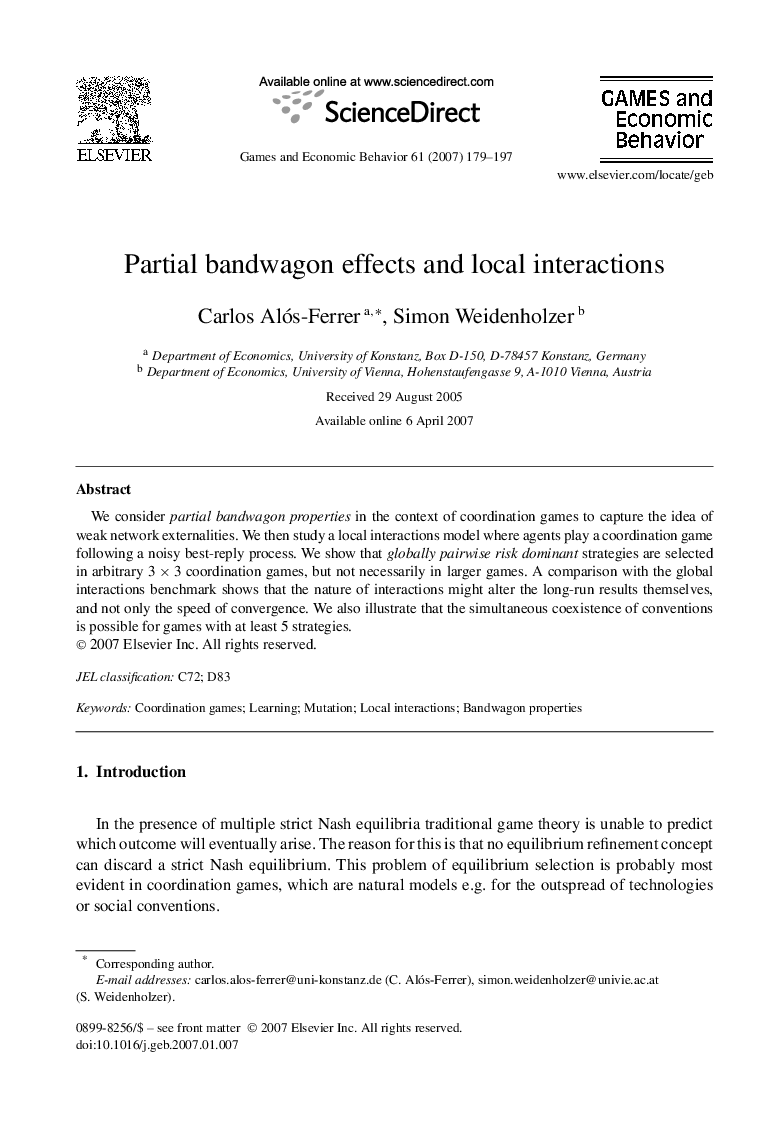| Article ID | Journal | Published Year | Pages | File Type |
|---|---|---|---|---|
| 5072646 | Games and Economic Behavior | 2007 | 19 Pages |
Abstract
We consider partial bandwagon properties in the context of coordination games to capture the idea of weak network externalities. We then study a local interactions model where agents play a coordination game following a noisy best-reply process. We show that globally pairwise risk dominant strategies are selected in arbitrary 3Ã3 coordination games, but not necessarily in larger games. A comparison with the global interactions benchmark shows that the nature of interactions might alter the long-run results themselves, and not only the speed of convergence. We also illustrate that the simultaneous coexistence of conventions is possible for games with at least 5 strategies.
Related Topics
Social Sciences and Humanities
Economics, Econometrics and Finance
Economics and Econometrics
Authors
Carlos Alós-Ferrer, Simon Weidenholzer,
